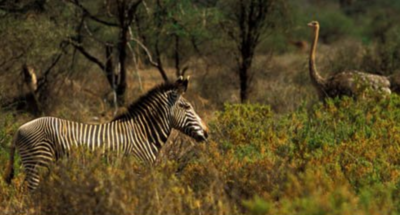
Collaboration among different species is common in nature. For instance, ostriches have sharp eyesight but poor hearing and weak sense of smell, while zebras have exceptional hearing and great sense of smell but bad eyesight. They form a symbiotic relationship to protect themselves from predators on the African savanna.
Drawing inspiration from symbiotic collaboration in nature, heterogeneous multi-robots can also work...